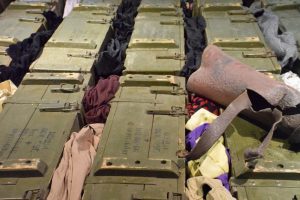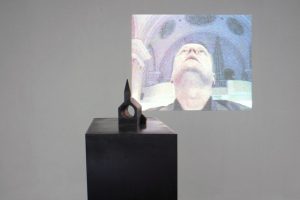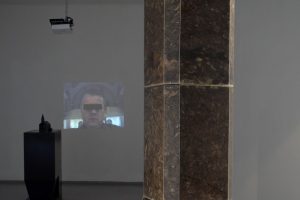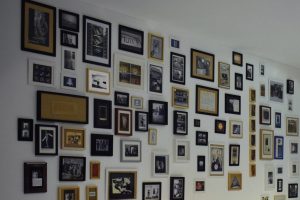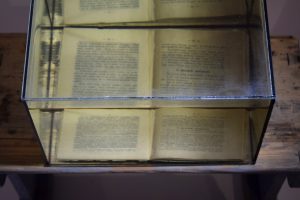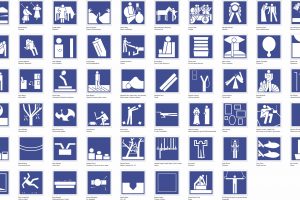The First Museum of Intermedia II (2017 ÔÇô 2021)
Between information and memory
Authors of works:
Juraj Bartusz
Anton ─îierny
Ilona N├ęmeth
Roman Ondák
Peter R├│nai
Stano Masár
Exhibition concept and Curator:
Mira Sikorová-Putišová
Architecture and Visual Design of Exhibition:
Marcel Ben─Ź├şk
Exhibition is supported using public funding by Slovak Arts Council

The sequel to The First Museum of Intermedia is a collection of works which (in addition to belonging to a predefined intermedia and media formats) reflect upon the phenomenon of memory as an issue highlighted especially in the art of the new millennium. To some extent, this is related to moving away from articulating themes (especially neo-conceptualism) through a rather universalist model, and vice versa ÔÇô an inclination to individual languages, the nuances of which determine the themes based on local (Slovak) context.
The preoccupation with memory (personal, historical, collective) and its embodiment in a way that can be identified as the author’s style (considering that such form of communication was quite rare in the nineties) is documented through the installation by Juraj Bartusz, who then made a number of works dedicated to reflecting on his past experience. A more evident (more personalized) attitude towards a certain historical experience (as the impetus for the so-called historical memory) is presented by the video object of Anton ─îierny. Both artworks ÔÇô one over a decade younger than the other ÔÇô demonstrate not only the presence of this theme in the nineties (Juraj Bartusz), but also a different strategy of its interpretation during the next decade (Anton ─îierny). In addition to the educator-student relation (Juraj Bartusz ÔÇô Anton ─îierny), both artists shaped their work by their interest in a certain socio-historical context, obtained through collective, but also personal perspective. The works of Ilona N├ęmeth, particularly the ones created during the last decade, utilize a similar approach. Like Bartusz and ─îierny, N├ęmeth comments upon the (dys)functionality of a collective memory, especially through her works dealing with the situation of minorities (now and then) or territoriality. Her object from the nineties that presents memory as part of the corporal factor in art is, symbolically speaking, a memory archive referring to individual but unknown persons.
The works of Roman Ondák, Peter Rónai, and Stano Masár cover the leitmotif of information associated with the consideration of the possibilities of its symbolic and real storage (the installation by Roman Ondák), its transcription, or the handling of it as an archiving unit, and possibly also as a means to create memory traces. In the works of Stano Masár and Peter Rónai, the information contains visual art itself, becoming a subject matter of reflecting on the artistic operation, its nature and penetration into everyday life, as well as criticising its mechanisms.

